Southern Caucasus 2023
We started the day meeting with a young professional woman who married into a mountain family. She talked about life and how it has changed since Soviet times. Traditionally in the mountains and perhaps in another rural areas the men were expected to have a job and the woman’s role was to take care of her husband and family. After Independence and the Civil War women began to get jobs and earn money. For some men this was a threat and family violence increased. For other men they began to treat their wives with more respect. Mountain men in general do not show emotion but may show love in other ways.
There are some organizations that try to assist women if violence occurs but
Susan Fulks
24 chapters
18 Aug 2023
Life in the Mountains
The Rooms Hotel, Stepantsminda, Georgia
We started the day meeting with a young professional woman who married into a mountain family. She talked about life and how it has changed since Soviet times. Traditionally in the mountains and perhaps in another rural areas the men were expected to have a job and the woman’s role was to take care of her husband and family. After Independence and the Civil War women began to get jobs and earn money. For some men this was a threat and family violence increased. For other men they began to treat their wives with more respect. Mountain men in general do not show emotion but may show love in other ways.
There are some organizations that try to assist women if violence occurs but
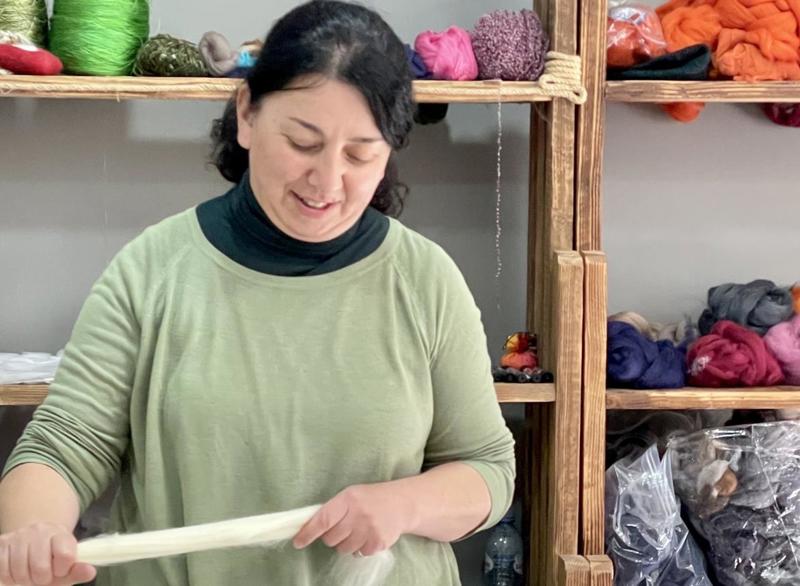
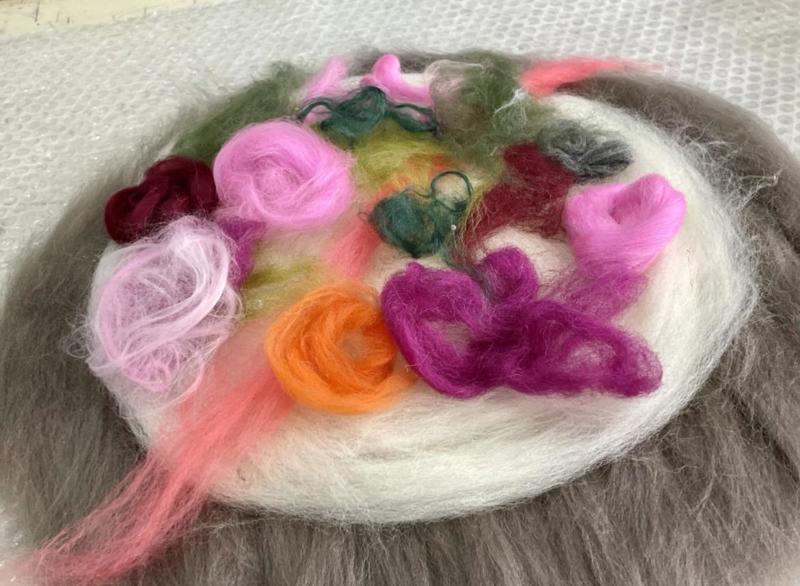
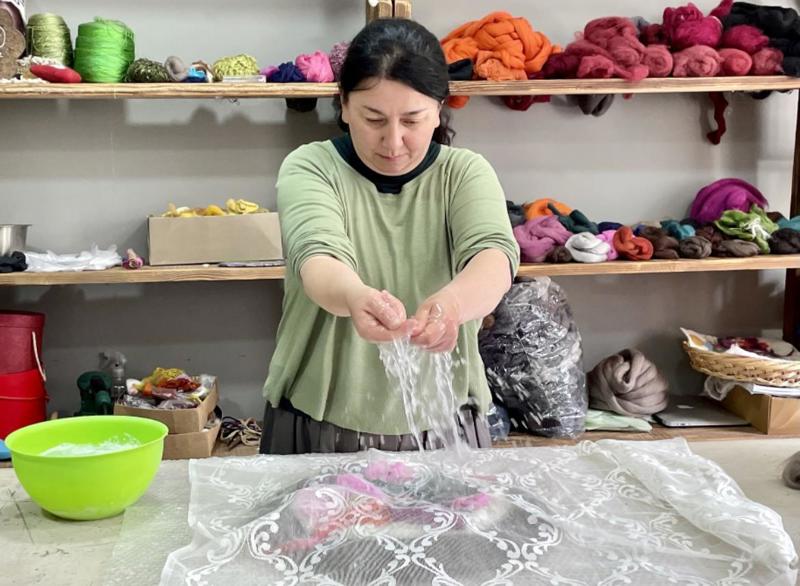
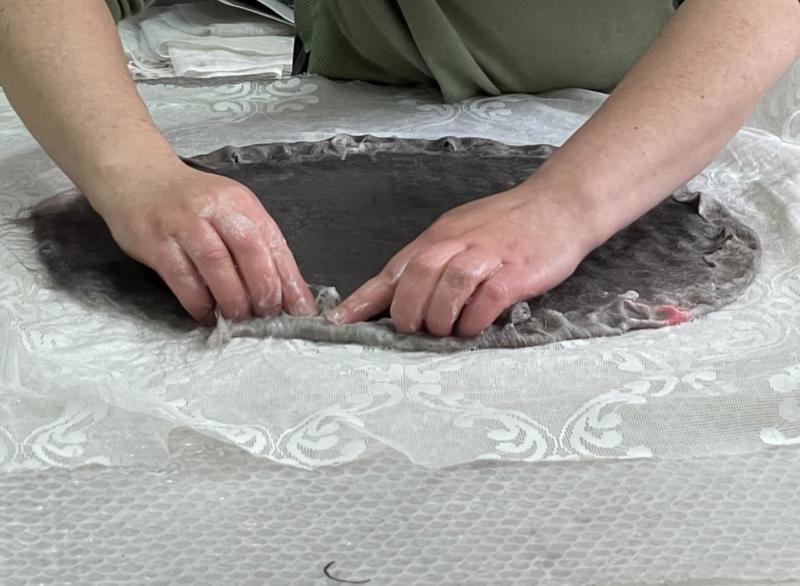
the police and society in general encourage women to try to work things out. Divorce is rarely an option as the woman’s family may not welcome her back and she needs money to live. Kidnapping of girls for brides was outlawed several years ago.
Leaving the community center we walked a few blocks through town to a studio for a Master Class in felt-making. The “wool felt master” gave us background on how important felt has been in the mountains for clothing, sleeping blankets, etc. and the differences between traditional methods and today.
She walked through the whole process with us. She first created a 42 cm diameter circle with two layers of gray wool, then a smaller circle of white silk. We each chose a small piece of colored yarn and added it to the top -
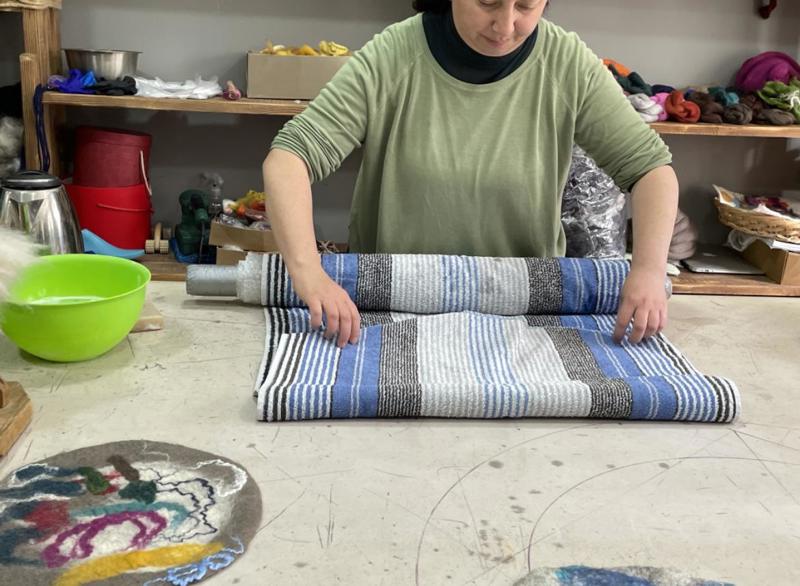
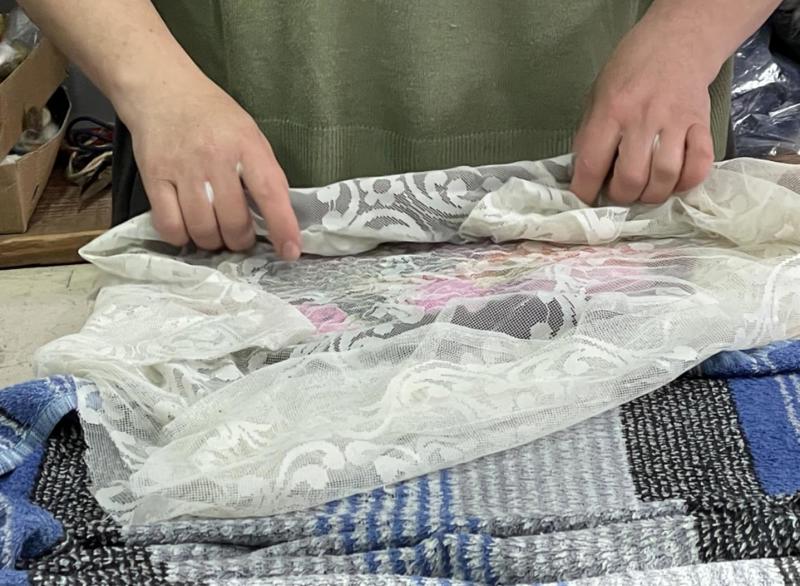
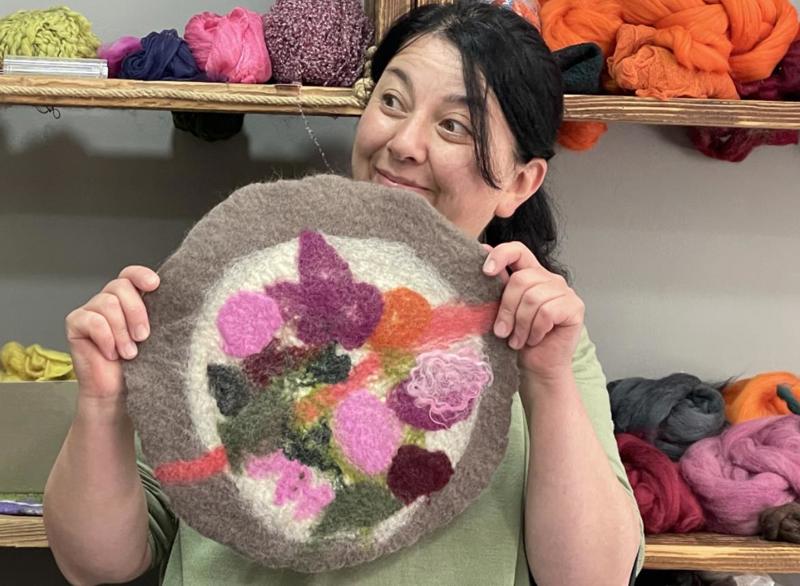
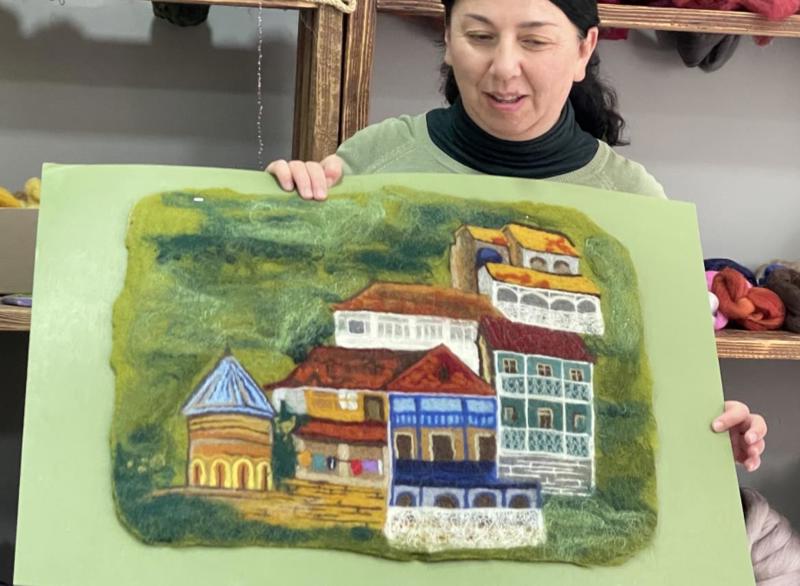
somewhat randomly coordinated. Next the circle was covered with a plastic cloth and a soapy water mixture was added to saturate the wool. Turning it upside down she neatened up the outside edge of the circle. After tying the plastic roll and covering it with a towel, she started rolling it for ten minutes to get most of the water out and to press in the colored fibers. When the felt was hard enough she washed it to get out the soap. Then it was finished except for drying. She also showed us some of her beautiful felt artwork.
We then moved to the tea shop next door for tastings: herb and berry teas; jams made out of walnuts, green tomatoes, watermelon, pine cones, roses, and sea buckthorn.
Four-wheel-drive vehicles drove us up a mountain to the tiny village of Tsdo near the Russian border. Tsdo still has 80 residents although most live elsewhere in the winter.
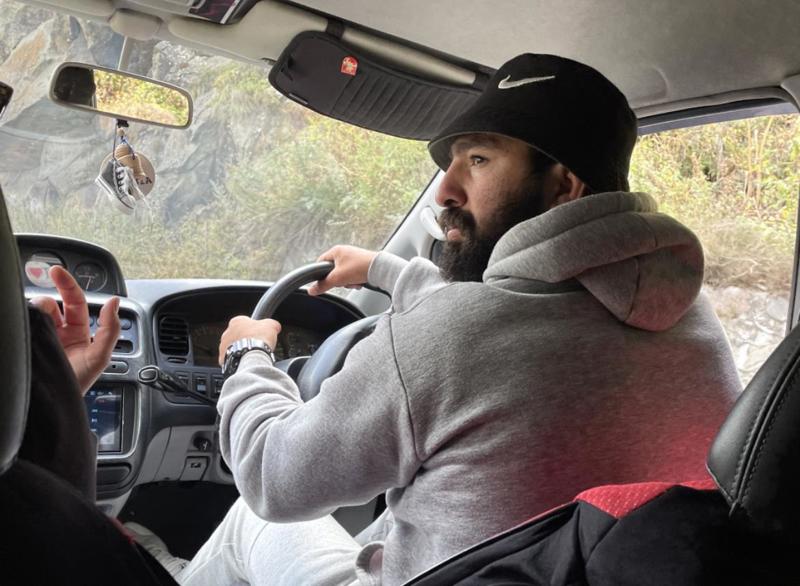
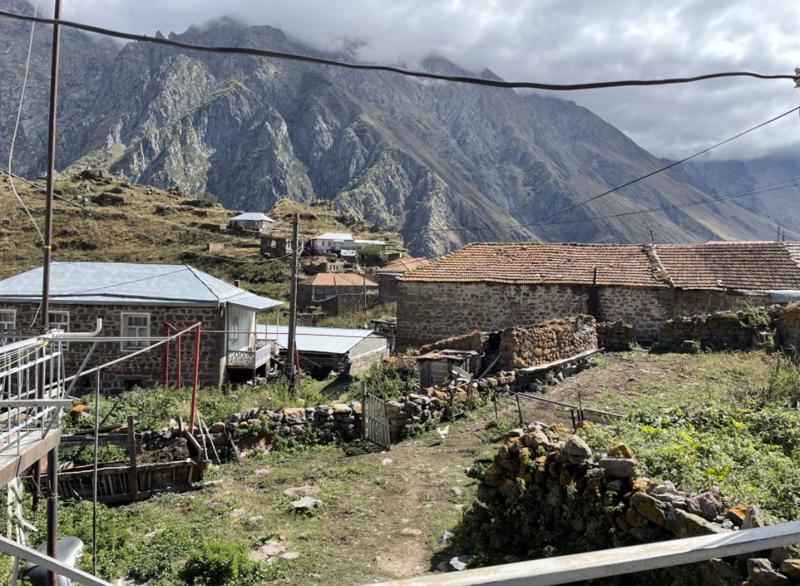
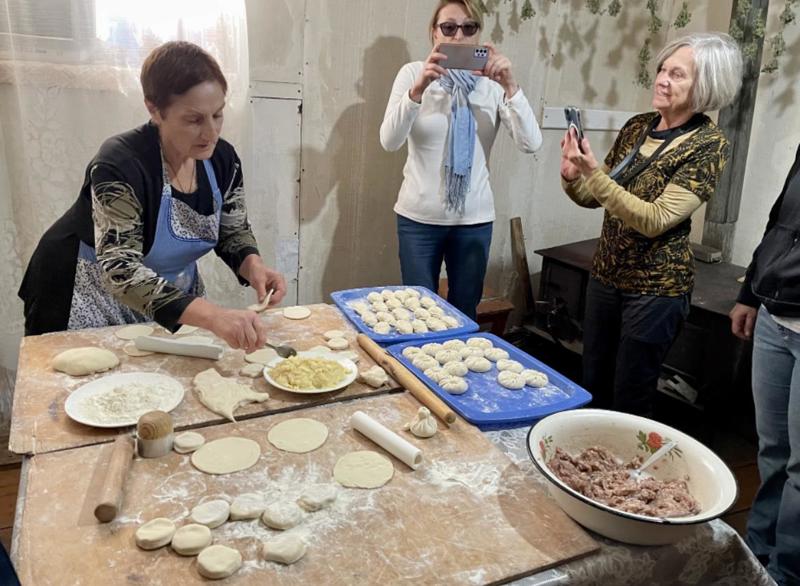
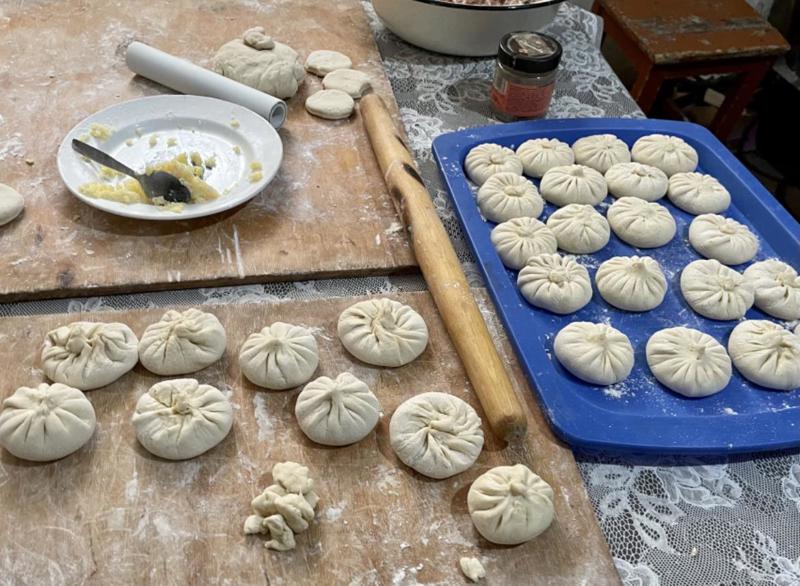
Our host Jimmy lives in a house built in 1820 with furniture the way his grandmother left it. But recently he bought a TV and has Internet via the satellite dish up the mountain behind the house.
Jimmy and his cousin taught us to make khinkali (meat and potato filled dumplings). We also enjoyed a locally grown lunch: cucumber/tomato salad, cheese and herb pies, beef stew, cheese, and Jimmy’s cognac and Amber wine.
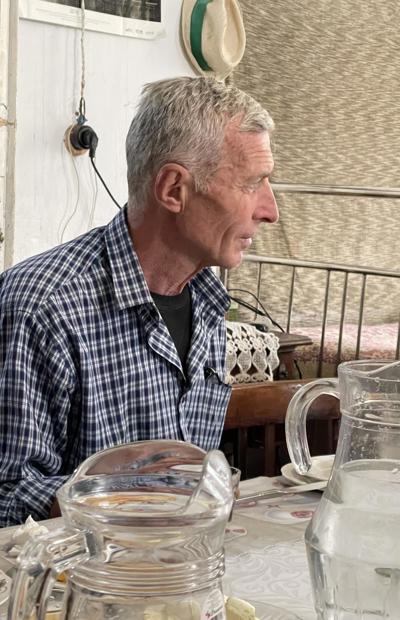
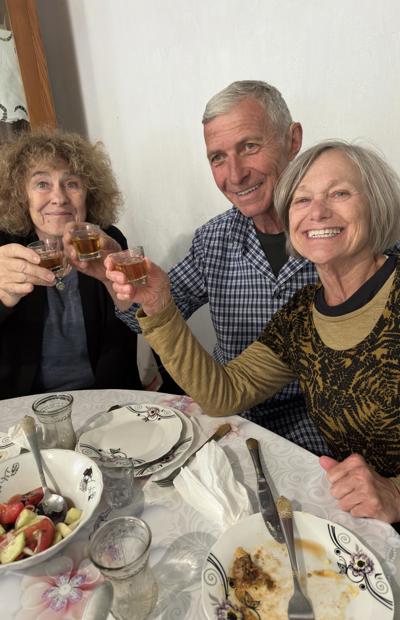
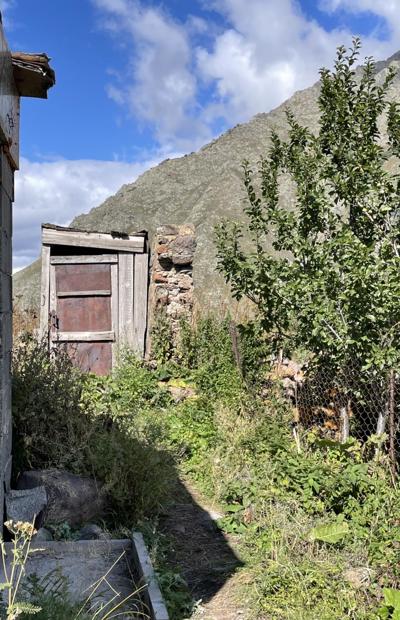
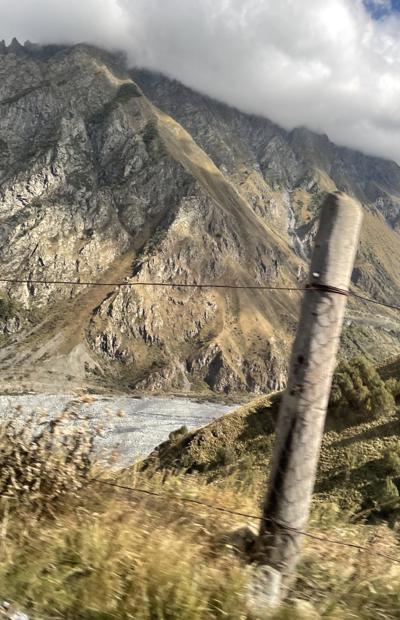
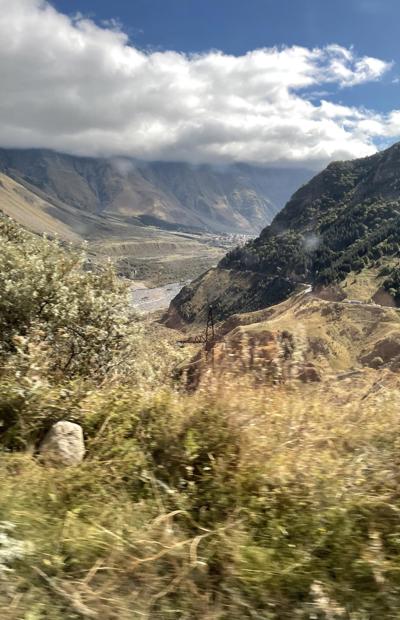
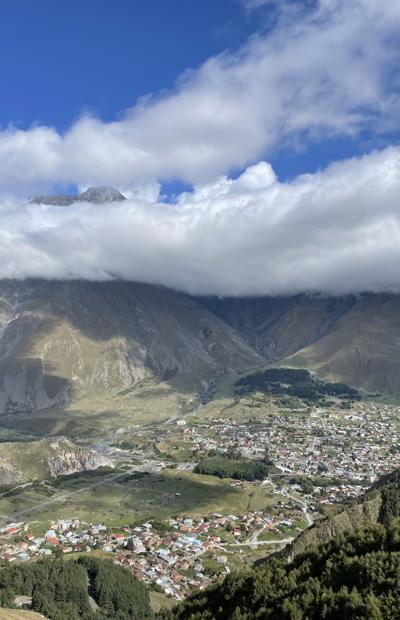
Our cars returned to take us back down to town and then up to another mountain hilltop to the 14th century Gergeti Trinity Church. Home to ten monks, the bell tower and church are visible from our hotel and serve as a Georgian landmark. The dramatic scenery from the church wall includes Mount Kazbek (16,581 ft) and the clouds did clear enough for us to briefly see the mountaintop.
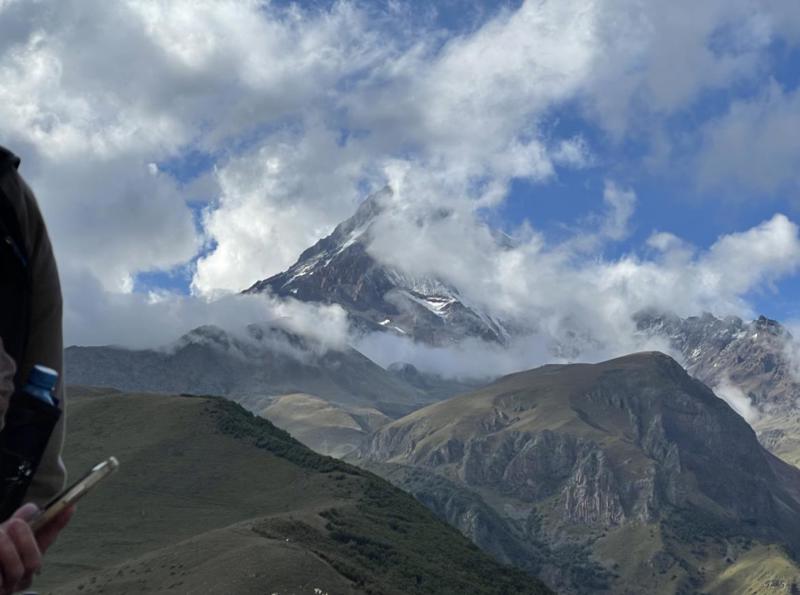
1.
Getting Ready
2.
Madison to Istanbul
3.
Tasting our way through Istanbul
4.
Bazaars and Islamic Art
5.
Azerbaijan’s Carpet Museum
6.
Exploring Baku
7.
War Memorials and Petroglyphs
8.
Juma Mosque and Mountain Villages
9.
Shaki Old Town to Kish Village
10.
Crossing the Border to Georgia
11.
Exploring Tbilisi
12.
Exploring Tbilisi Part 2
13.
Visiting Tserovani
14.
Overland to Borjomi
15.
The Cave City of Vardzia
16.
Overland to Stepantsminda
17.
Life in the Mountains
18.
Overland to Telavi
19.
Market, Wine, Bread, Monastery
20.
Yerevan, Armenia
21.
Exploring Yerevan
22.
Monasteries and Cathedrals
23.
Cave Monastery to Temple of Garni to cooking lessons
24.
An Extra Day
Share your travel adventures like this!
Create your own travel blog in one step
Share with friends and family to follow your journey
Easy set up, no technical knowledge needed and unlimited storage!
© 2025 Travel Diaries. All rights reserved.